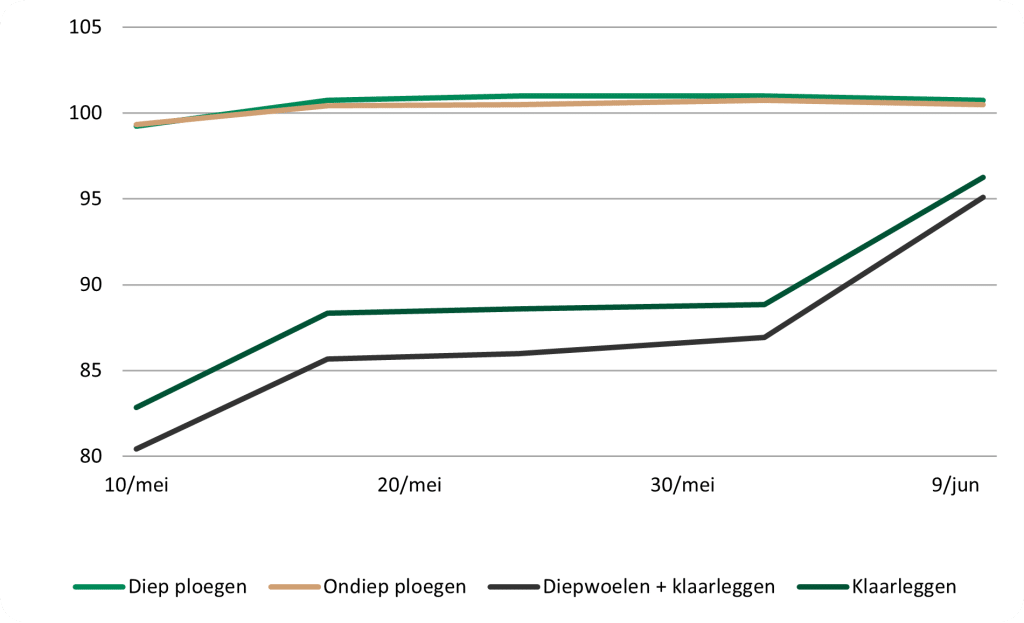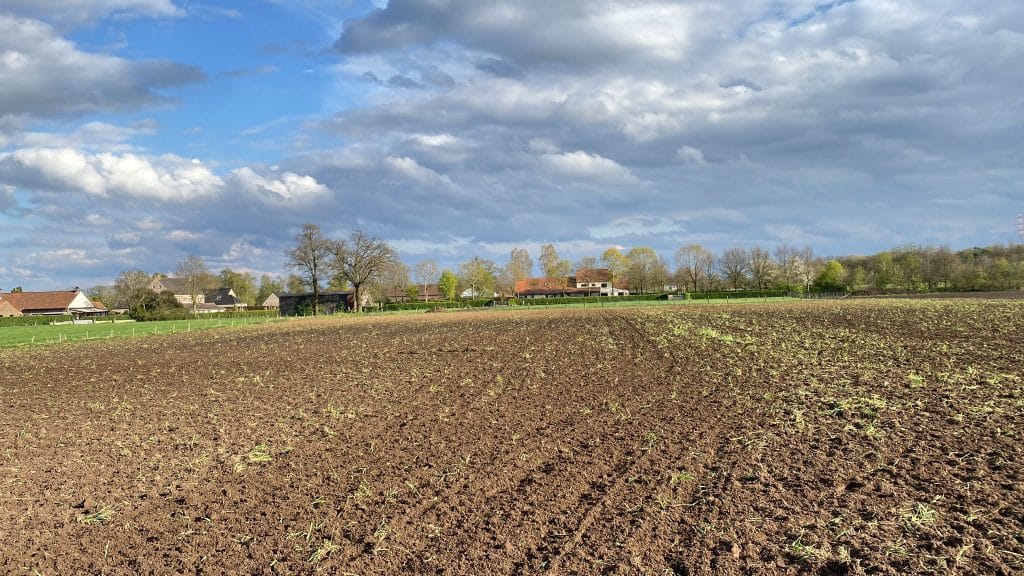The impact of soil operations on soil moisture losses
2024 will be noted as a year with a very wet winter and a late-starting spring. It is still unclear if and when the weather will turn around but the past few years have given us the opportunity to examine how the method of tillage can affect the presence of moisture in the soil. We are happy to pass on the conclusions of the study before the real start of spring work.
Within the project 'Keep moisture in the soil', funded by the Limburg Drought Innovation Fund, PIBO-Campus and the Agricultural Research and Training Centre investigated the impact of seedbed preparation on maize and chicory. Soil preparation trials were conducted in both 2022 (a dry summer) and 2023 (a dry spring). The objective was to find out to what extent differences in tillage have an impact on the evaporation of moisture from the soil. A higher degree of evaporation will lead to a greater/earlier need for moisture after a period of drought.
Soil operations for maize
Maize cultivation often requires a lot of irrigation water, especially on sandy soils, to maintain yields. In maize, the impact of rotational or non-rotational tillage on soil moisture content was specifically investigated. To this end, tests were carried out over two years in a monoculture maize plot in Bocholt (sand). In these, following treatments were compared:
Deep ploughing (24 cm) with furrow packer, shallow ploughing (18.5 cm) with furrow packer, a deep-soiler-ready combination (40 cm) and shallow treatment with a cultivator (10-15 cm).
Retaining soil treatments resulted in smooth and good emergence, while non-retaining soil treatments were more laborious. However, non-returning soil tillage operations showed strong juvenile growth, especially when treated shallowly with a cultivator before sowing. This juvenile growth resulted in a better developed plant and ultimately higher yield per hectare, especially in 2023.

Turnout trends for different soil operations in 2022 (source: PVL).

Evolution of soil moisture conditions at different seedbed preparations in 2022 (source: PVL).
Seedbed preparation for chicory

Branched chicory root in direct seeding (source: PIBO-Campus).
A smooth, compact, fine and moist seedbed is essential for successful chicory emergence. Due to the shallow sowing depth (0.5 cm), a fine seedbed is crucial to ensure good seed coverage. Seedbed preparation trials were conducted in both 2022 and 2023 in Haspengouw (loam).
Establishing a 'false seedbed' shortly before sowing often proves to be the first step for a successful seedbed, especially on soil that is difficult to cultivate. This process helps ensure rapid and even emergence, especially after sufficient rainfall, by naturally breaking down the hardest clods. The trials showed that for optimum emergence, the false seedbed is best established with a rotor harrow-cross-kilette or a compactor. Both techniques produced similar yields, although the compactor worked faster and consumed less fuel. In addition, moisture loss in the top layer was found to be slightly lower when using the compactor than the roto harrow.
Direct seeding is a well-known technique to work on carbon accumulation, but did not prove to be an optimal strategy for chicory in Haspengouw due to problems with seeding depth and emergence. Although direct seeding can result in heavier chicory roots, the lower plant number and root deformation can lead to yield losses.
Impact of weed control
Mechanical weed control is also a form of soil tillage that can encourage evaporation of moisture. Therefore, both mechanical (weeding/hoeing) and chemical weed control methods were investigated in maize. Mechanical weed control, however, showed no significant difference in soil moisture compared to chemical weed control. Mechanical weed control did show benefits: No growth retardation was observed in contrast to the chemical method. On the other hand, this was offset by increased labour intensity.
Decision
Drought is a growing concern for agriculture. Research shows that deliberate soil tillage can make a significant difference in reducing moisture loss in spring, which is crucial for successful crop emergence and juvenile growth. For maize, deep ploughing seems to be the best practice while for chicory, false seeding is recommended on difficult plots.
Non-tilling soil operations can compensate for lower emergence by stronger plants and also have advantages during dry periods. Mechanical weed control therefore seems to be an interesting yet labour-intensive alternative to chemical methods. The labour intensity contributes to the fact that it is not yet widely used in practice today








